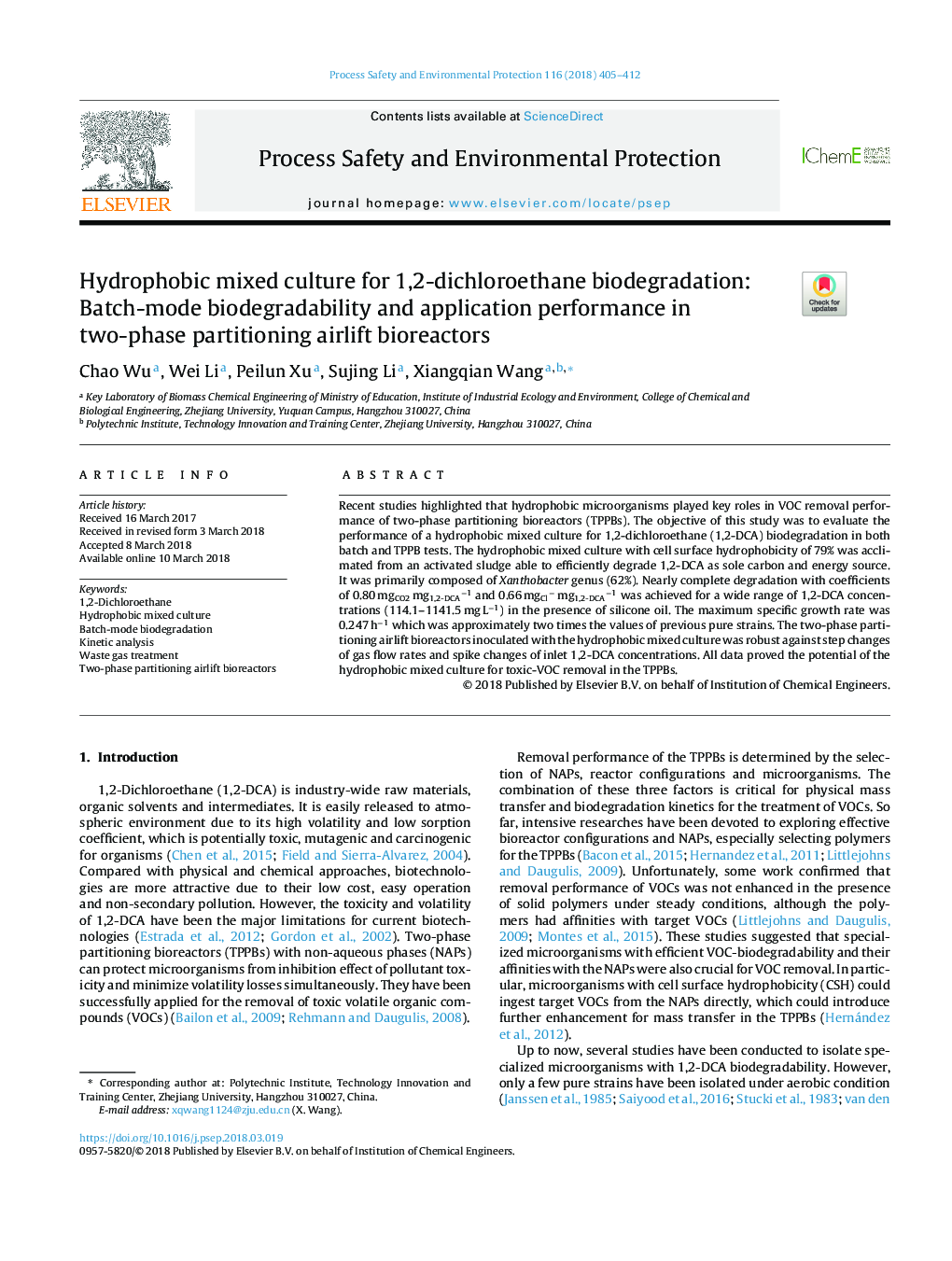| Article ID | Journal | Published Year | Pages | File Type |
|---|---|---|---|---|
| 6974095 | Process Safety and Environmental Protection | 2018 | 8 Pages |
Abstract
Recent studies highlighted that hydrophobic microorganisms played key roles in VOC removal performance of two-phase partitioning bioreactors (TPPBs). The objective of this study was to evaluate the performance of a hydrophobic mixed culture for 1,2-dichloroethane (1,2-DCA) biodegradation in both batch and TPPB tests. The hydrophobic mixed culture with cell surface hydrophobicity of 79% was acclimated from an activated sludge able to efficiently degrade 1,2-DCA as sole carbon and energy source. It was primarily composed of Xanthobacter genus (62%). Nearly complete degradation with coefficients of 0.80 mgCO2 mg1,2-DCAâ1 and 0.66 mgClâ mg1,2-DCAâ1 was achieved for a wide range of 1,2-DCA concentrations (114.1-1141.5 mg Lâ1) in the presence of silicone oil. The maximum specific growth rate was 0.247 hâ1 which was approximately two times the values of previous pure strains. The two-phase partitioning airlift bioreactors inoculated with the hydrophobic mixed culture was robust against step changes of gas flow rates and spike changes of inlet 1,2-DCA concentrations. All data proved the potential of the hydrophobic mixed culture for toxic-VOC removal in the TPPBs.
Related Topics
Physical Sciences and Engineering
Chemical Engineering
Chemical Health and Safety
Authors
Chao Wu, Wei Li, Peilun Xu, Sujing Li, Xiangqian Wang,
